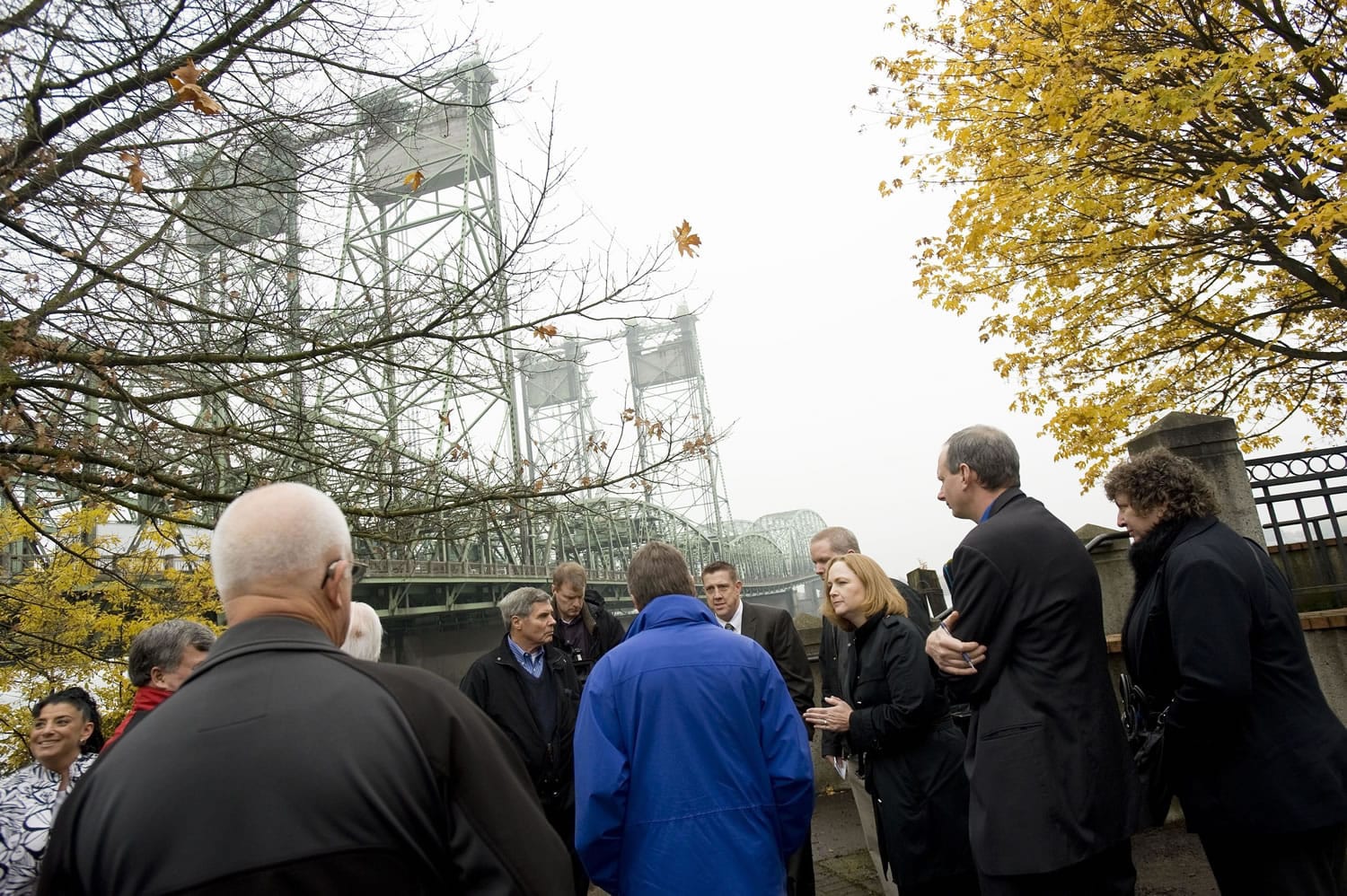PORTLAND — Oregon legislators tasked with overseeing the Columbia River Crossing said Friday they have grave concerns about the project —- especially its $3.5 billion price tag — but also weren’t sold on the many alternatives opponents brought forward.
Nearly 20 critics of the controversial megaproject spoke before the Oregon Legislature’s Columbia River Crossing Oversight Committee hearing at Oregon’s Metro regional government offices.
Still, a few of the 10-member bipartisan committee said they’d like to hear more about different bridge plans, including the “Common Sense Alternative” proposed by Portland urban planner George Crandall.
“I’ve heard enough info all along that there is significant and dire concern about the financial viability of this project,” said Katie Eyre Brewer, R-Hillsboro. “Somehow the public love for this project has gone away.”
She and other legislators asked what the price of going back to the drawing board would be, whether the project would have to restart environmental work, and how long it would take.
What the critics had to say wasn’t news to anyone who tracks the project, but it likely covered new ground for legislators from far-flung corners of the state. Washington has a similar oversight committee that has met a few times in Olympia.
Crandall presented his alternative, which made a splash on YouTube. It proposes to: strengthen the existing spans against earthquakes; add a midstream lift span to the BNSF Railway bridge just downstream of the I-5 Bridge; build new local bridges — including light rail and bicycle paths — between west Vancouver and Hayden Island, and between Hayden Island and Portland’s Kenton neighborhood; and reduce commuter trips with commuter rail service from downtown Vancouver to downtown Portland via the existing BNSF rail line.
The work, he said, could be done for less than $2 billion.
It wouldn’t take long to get the project under way, he said, because it has so much support, unlike the CRC.
“These projects can be accelerated, they can be done quickly if there is consensus,” Crandall said.
But when asked, neighborhood leaders acknowledged they had reservations about “local” bridges connecting to city streets and creating more traffic.
Search for credibility
Other third-bridge advocates with less experience in urban design also gave their suggestions — all appeared to involve connecting a bridge to Mill Plain Boulevard and Marine Drive, or a combination of other nonhighway routes.
Clackamas Republican Rep. Patrick Sheehan told Sharon Nasset, founder of “Third Bridge Now,” that her work lacks credibility.
“The documents you provided us look like they’re Google Earth images with lines drawn on them,” Sheehan said. “Can you explain the level of expertise you have, or is this the work of more of a concerned citizen?”
Nasset countered that because her options weren’t taken up by engineers as the CRC was, she doesn’t have the detailed plans project staff do.
Portland economist and vocal CRC critic Joe Cortright outlined how key shortfalls in traffic modeling and tolling diversions, plus shaky state and federal finances, could put Oregon and Washington on the hook for billions in cost overruns and debt.
“You will pay for it,” said Cortright, noting that every recent large transportation project in Oregon has gone over budget. “The state of Oregon and the state of Washington will pay for cost overruns.”
Cortright called for an immediate investment grade analysis of tolling revenue on an Interstate 5 bridge. That could cost about $200,000, just over one-tenth of the $1.9 million the CRC spends each month on planning.
“This causes enough concern that I wonder: Can we afford anything at all?” asked Rep. Nancy Nathanson, D-Eugene. “Can we afford any of the alternatives? Should we consider the picture so bleak that the federal government won’t come up with anything, and the cost overruns will be so great that the state of Oregon shouldn’t be involved in anything of this magnitude?”
Most of the speakers hailed from Oregon, although Clark County Commissioner Tom Mielke spoke early in the four-hour-plus meeting. He said he’s among those who believe a third bridge is vital.
“A new bridge, it doesn’t matter if it’s six lanes or 16 lanes, it will not relieve congestion,” Mielke said.
Tiffany Couch, a forensic accountant from Vancouver who is combing through the project’s $144.5 million in spending thus far, was on the list of scheduled speakers, but did not attend.
Lawsuit predicted
Tom Buchele, a law professor at Lewis and Clark College, said that because traffic estimates are off, the CRC’s final environmental documents are incorrect and void.
When asked about the potential for a lawsuit to stop the project, Buchele responded: “Do I think litigation will be filed? Yes.”
Committee co-chairman Rep. Cliff Bentz, R-Ontario, said there will be more meetings. CRC staff, who were not given time to testify Friday, will have the next meeting to rebut critics’ testimony, he said.
He also asked opponents to email the committee with ideas about how to communicate issues with the CRC to the wider lawmaking body.
“Just be sure to label yourself as some kind of expert,” Bentz said. “This is a very, very complex project. And we don’t see too many engineers up here — we don’t see a lot of architects or planners either.”
Bentz’s Democratic co-chairman, Sen. Lee Beyer of Springfield, said he saw from the hearing that there’s a need to do something about the troubled corridor.
But he also said he doesn’t see his state putting forward its $450 million until he’s sure more fiscal liability won’t fall in Oregon’s lap.
“One of the realities of this project is that regardless of what design is chosen, if any is chosen, the Legislature will not allow the project to go forward until we have secured the federal funding,” Beyer said.



